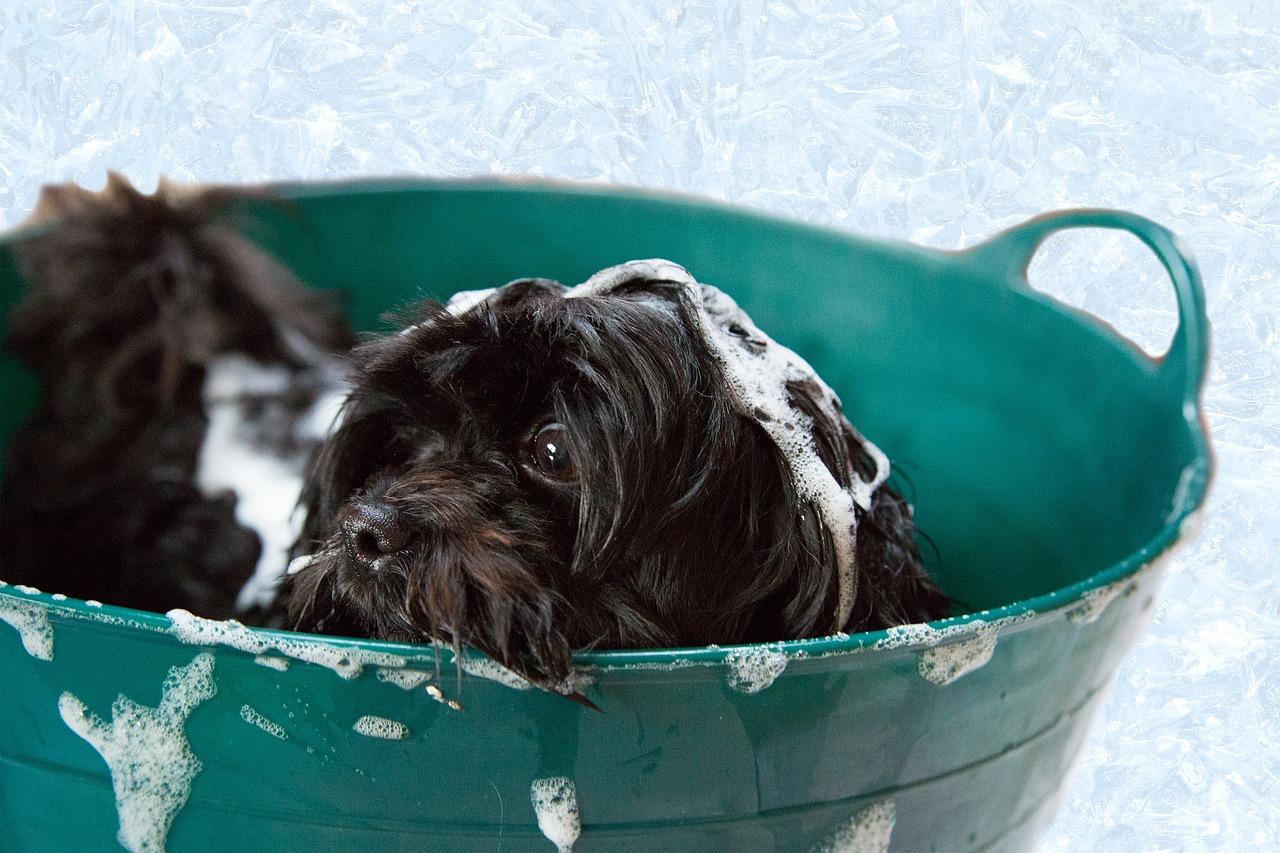
Are you tired of dealing with your furry friend’s constant ear infections? Say goodbye to the discomfort and endless trips to the vet with our comprehensive guide on how to keep your dog’s ears clean and healthy. Just like humans, dogs are susceptible to ear infections, and they can be quite a nuisance. However, with the right knowledge and preventive measures, you can ensure that your dog’s ears remain free from infections and irritation.
In this article, we will dive deep into the causes of ear infections in dogs and provide you with practical tips and techniques to maintain proper ear hygiene. From regular cleaning to identifying common symptoms, we’ve got you covered. So, let’s embark on this journey together and give your furry companion the gift of healthy and infection-free ears. Get ready to bid those ear infections farewell, once and for all!
Understanding Ear Infections in Dogs
Ear infections in dogs are a common problem that can cause discomfort and pain for your furry friend. It’s important to understand what causes these infections in order to effectively prevent and treat them.
Types of ear infection in dogs
There are three main types of ear infections in dogs: external, middle, and inner ear infections. External ear infections, also known as otitis externa, occur in the outer ear canal. Middle ear infections, or otitis media, affect the middle ear, while inner ear infections, known as otitis interna, occur in the inner ear.
Factors and causes
Ear infections in dogs can be caused by a variety of factors, including allergies, moisture, parasites, foreign objects, and underlying health conditions. It’s crucial to identify the root cause of the infection to provide the appropriate treatment and prevent recurrence.
Common Causes of Ear Infections in Dogs
Understanding the common causes of ear infections in dogs can help you take preventive measures to keep your furry friend’s ears healthy.
Allergies
One of the primary causes is allergies. Dogs can be allergic to various substances, such as pollen, dust mites, certain foods, and even flea bites. Allergies can lead to inflammation and itching, making the ears more susceptible to infections.
Moisture
Moisture is another common cause of ear infections in dogs, especially those with floppy ears or dogs that spend a lot of time in water. It creates a favourable environment for bacteria and yeast to grow, leading to infections. It’s important to thoroughly dry your dog’s ears after swimming or bathing to prevent moisture-related infections.
Parasites
Parasites, such as ear mites, can also cause ear infections in dogs. These tiny parasites can cause intense itching and irritation, resulting in secondary bacterial or yeast infections. Regular preventative treatments can help keep parasites at bay and reduce the risk of infections.
Foreign objects in the ear
Foreign objects, such as grass seeds or debris, can also cause ear infections in dogs. These objects can get lodged in the ear canal, causing irritation and inflammation. Regularly inspecting your dog’s ears and removing any foreign objects can help prevent infections.
Health issues
Lastly, underlying health conditions, such as hormonal imbalances or autoimmune diseases, can make dogs more prone to ear infections. Identifying and treating these underlying conditions is essential to prevent recurrent infections.
Signs and Symptoms of Ear Infections in Dogs
Recognizing the signs and symptoms of ear infections in dogs is crucial for early detection and prompt treatment. Some common symptoms include:
- Scratching or rubbing the ears excessively
- Ear odour or discharge
- Redness, swelling, or inflammation of the ears
- Shaking of the head or tilting it to one side
- Pain or sensitivity when the ears are touched
- Loss of balance or coordination
If you notice any of these symptoms, it is important to consult your veterinarian for a proper diagnosis and treatment plan. Ignoring the signs of an ear infection can lead to further complications and discomfort for your furry friend.
Importance of Regular Ear Cleaning
Regular ear cleaning is an essential part of maintaining your dog’s ear health and preventing infections. Cleaning your dog’s ears helps remove dirt, debris, wax, and excess moisture, reducing the risk of infections. It also allows you to inspect the ears for any signs of inflammation or abnormalities.
The frequency of ear cleaning depends on your dog’s breed, activity level, and ear shape. Generally, most dogs benefit from weekly or bi-weekly ear cleanings. However, dogs with floppy ears or a history of ear infections may require more frequent cleanings.
It is important to note that overcleaning or using harsh products can disrupt the natural balance of the ear and cause irritation. Always use gentle cleansers specifically formulated for dogs, and avoid inserting cotton swabs or any objects into the ear canal, as this can damage the delicate structures inside.
How to Clean Your Dog’s Ears Safely and Effectively
Cleaning your dog’s ears may seem like a daunting task, but with the right approach and technique, it can be a stress-free experience for both you and your furry friend. Here’s a step-by-step guide on how to clean your dog’s ears safely and effectively:
Gather the necessary supplies
You will need a dog-specific ear cleaning solution, cotton balls or pads, and treats to reward your dog for good behaviour.
Choose a calm and quiet environment
Find a comfortable space where you and your dog can relax without distractions. This will help make the process more enjoyable for both of you.
Secure your dog
If your dog tends to be squirmy or anxious during ear cleanings, you may need to gently restrain them or enlist the help of another person to hold them still.
Inspect the ears
Before cleaning, carefully examine your dog’s ears for any signs of redness, discharge, or inflammation. If you notice anything unusual, consult your veterinarian before proceeding with the cleaning process.
Apply the ear cleaning solution
Follow the instructions on the ear cleaning solution bottle and apply a few drops into your dog’s ear canal. Gently massage the base of the ear for about 30 seconds to help loosen any debris or wax.
Wipe away debris
Take a cotton ball or pad and gently wipe away any visible debris or excess ear cleaning solution. Be sure to reach into the crevices of the ear without inserting the cotton ball too deep into the ear canal.
Reward your dog
After each successful ear cleaning session, reward your dog with treats and praise to reinforce positive behaviour. This will help make future cleanings easier.
Remember, consistency is key. Regularly cleaning your dog’s ears will help maintain their ear health and prevent infections. If you have any concerns or difficulties with the cleaning process, don’t hesitate to consult your veterinarian for guidance.
Natural Remedies for Preventing Ear Infections in Dogs
In addition to regular cleaning, there are several natural remedies that can help prevent ear infections in dogs. These remedies can be used as a complementary approach to maintain your dog’s ear health. Here are some effective natural remedies:
Apple cider vinegar
Dilute apple cider vinegar with an equal amount of water and use it as a gentle ear cleaning solution. The acidity of the vinegar helps create an unfavourable environment for bacteria and yeast.
Coconut oil
Apply a small amount of organic, cold-pressed coconut oil to the inside of your dog’s ears. Coconut oil has natural antibacterial and antifungal properties that can help prevent infections.
Calendula oil
Calendula oil has soothing and healing properties. Mix a few drops of calendula oil with a carrier oil, such as olive or almond oil, and apply it to your dog’s ears to prevent inflammation and infection.
Probiotics
Adding probiotics to your dog’s diet can help support a healthy immune system and prevent ear infections. Consult your veterinarian for the appropriate probiotic supplement for your dog.
It is important to note that natural remedies should not replace proper veterinary care. If your dog has an active ear infection or persistent symptoms, consult your veterinarian for a proper diagnosis and treatment plan.
Tips for Maintaining Your Dog’s Ear Health
Aside from regular cleaning and natural remedies, there are several other tips you can follow to maintain your dog’s ear health:
Keep your dog’s ears dry
Moisture can create a breeding ground for bacteria and yeast. After swimming or bathing, thoroughly dry your dog’s ears using a clean towel or a gentle blow dryer on a low setting.
Trim excessive hair
Dogs with long, floppy ears or excessive hair around the ear canal are more prone to ear infections. Regularly trim the hair around your dog’s ears to improve air circulation and reduce the risk of infections.
Avoid irritants
Certain irritants, such as cigarette smoke, harsh cleaning chemicals, and perfumes, can cause ear irritation and increase the risk of infections. Keep your dog away from these substances to maintain their ear health.
Regular veterinary check-ups
Schedule regular check-ups with your veterinarian to monitor your dog’s overall health, including their ears. Your vet can identify any potential issues early on and provide appropriate treatment.
Be observant
Pay attention to any changes in your dog’s behaviour or ear condition. Early detection of symptoms can help prevent the progression of infections and ensure timely treatment.
When to Seek Veterinary Care for Your Dog’s Ear Infections
While regular cleaning and preventive measures can help prevent many ear infections in dogs, there may be instances when veterinary care is necessary. If your dog is experiencing any of the following, it’s important to consult your veterinarian:
Persistent or recurrent ear infections
If your dog’s ear infections keep coming back despite your best efforts, there may be an underlying issue that needs to be addressed.
Severe or worsening symptoms
If your dog’s symptoms are severe, such as intense pain, bleeding, or swelling, seek immediate veterinary care. These could be signs of a more serious infection or injury.
Changes in behaviour or appetite
Ear infections can cause discomfort and pain, leading to changes in your dog’s behaviour or appetite. If you notice any significant changes, it’s important to consult your veterinarian.
Head tilting or balance problems
Ear infections can affect your dog’s balance and coordination. If your dog is tilting their head to one side or having difficulty maintaining balance, it could be a sign of an inner ear infection.
Your veterinarian will perform a thorough examination of your dog’s ears and may recommend further diagnostic tests, such as ear swabs or blood work, to determine the underlying cause of the infection. They will then provide a tailored treatment plan to address the specific needs of your furry friend.
Conclusion
Keeping furry friend’s ears clean and healthy is essential for their overall well-being. By understanding the causes of ear infections, recognizing the signs and symptoms, and implementing preventive measures, you can significantly reduce the risk of infections and ensure a happy and comfortable life for your dog. Regular ear cleanings, natural remedies, and veterinary care when needed are the key components of maintaining proper ear hygiene. Remember, a little effort in preventing ear infections goes a long way in ensuring your dog’s ear health and happiness. So bid those ear infections farewell and enjoy the joy of having a furry companion with healthy and infection-free ears!
































